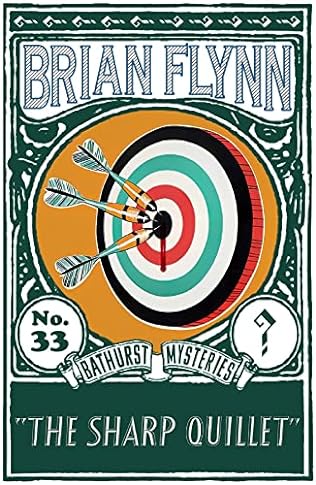A review of Triple Quest by E R Punshon – 240409
The thirty-fourth and penultimate novel in Punshon’s long running Bobby Owen series was originally published in 1955 and has been reissued by Dean Street Press. As I approach the end of the series I have been eking the books out, savouring them like a gourmand, and in this novel Punshon does not disappoint. It is a complex story that has some twists and turns and a culprit whose identity is not obvious until the end.
Whether Punshon knew the end was nigh, by this time he was eighty-three, but he pulls out all the stops. There are some memorable characters, not least the wonderfully named Marmaduke Groan, a private investigator who comes to Owen with a story of a missing arts critic, Alfred Atts, but who is unable or unwilling to disclose the whole truth, and the art gallery attendant, Early Hyams, who reveres the paintings under his charge and despises the hoi polloi who give them barely a glance. There are also some picaresque characters like Monkey Baron and Irish Joe who aare no stereotypical ciphers but light up the page when they appear.
The dialogue is on occasions witty and there are some dramatic and thrilling episodes to enjoy. Owen is never one to pull out of a physical confrontation and manages to get the better of his unsavoury opponents from the demi-monde when he is set upon. He also is willing to risk his life by entering into a burning building to save Mrs Taylor who had only just finished demonstrating her displeasure at his appearance by launching a hail of missiles at him and threatening to shoot. Owen is also given the opportunity to demonstrate his proficiency as a lock picker.
Punshon’s narrative also shines a fascinating light on the times. The Owens have a new toy, a television set, and Atts is a new breed of person, a television celebrity who has graced the new fangled screens to talk about art. Not that Bobby Owen needs any crash course on how to appreciate art. Punshon’s sleuth has always been a little different from the normal policeman, educated, albeit with a third without honours from Oxford, from an aristocratic background, a connection that he has fought hard to play down during his career, with a tenacious desire to uncover the truth and the invaluable ability to be at the right place at the time.
He is also highly cultured with a love of art, a trait that pays dividends in a book which, following on from The Golden Dagger and Diabolic Candelabra, has an objet d’art at its heart. He remembers on a previous visit to the South Bank Gallery that Rembrandt’s Girl Peeling Apples made a deep impression upon him, but looking at it now it seemed an inferior work. Owen’s nose for the discrepancies in these feelings, coupled with a tip on mahogany – the work was painted on a mahogany panel, the wood not being available during the painter’s lifetime – leads him to realise that there is something odd going on at the gallery, most likely the substitution of fakes for the real thing.
Was this what Arthur Atts had rumbled and was about to reveal in a much hyped lecture, bringing disrepute to the gallery and getting revenge on its director, Sir Walter Wyatt, who had beaten Atts to discovering the painting in the first place? Was this why he conveniently disappeared just before delivering the lecture and where was Jasmine, the impoverished artist with a talent for reproducing masters but an even greater talent for original works, and where was the original painting? A meaty triple quest for Owen, aided by the faithful Ford, to get his teeth into.
Atts has his own dark secret, an emotional entanglement, and Wyatt’s suspicious behaviour adds some complexity to the plot, resolved amusingly and embarrassingly for the director and prompting Owen to exercise an astonishingly direct form of art criticism. As the story settles down and moves towards its thrilling finale another two bodies are added to those of Atts and Jasmine who, unsurprisingly, have been murdered. The book ends on a pleasing emotional high as Bobby Owen is able to ensure pride of place for Jasmine’s astonishing portrait of the Montgomery’s children and a source of income for the impoverished couple.
As a book it is one of Punshon’s best, an astonishing achievement and a veritable tour de force.




